Cheat Sheet: Other Constitutional Dimensions | Indian Polity for UPSC CSE PDF Download
| Table of contents |

|
| Introduction |

|
| Cooperative Societies |

|
| Official Language |

|
| Public Services |

|
| Rights and Liabilities of the Government |

|
| Special Provisions for Certain Classes |

|
| Chronology of Key Provisions |

|
Introduction
This chapter explores key constitutional dimensions in India, covering Cooperative Societies, Official Language, Public Services, Rights and Liabilities of the Government, and Special Provisions for Certain Classes. These topics, enshrined in the Indian Constitution, address critical aspects of governance, social equity, and administrative framework. The chapter provides a clear, concise reference for understanding their provisions, significance, and implications, particularly for students or those studying Indian polity.
Cooperative Societies
Cooperative Societies are organizations formed voluntarily to promote economic and social welfare through collective efforts. Part IX-B of the Constitution, added by the 97th Amendment in 2011, provides a framework for their regulation and promotion.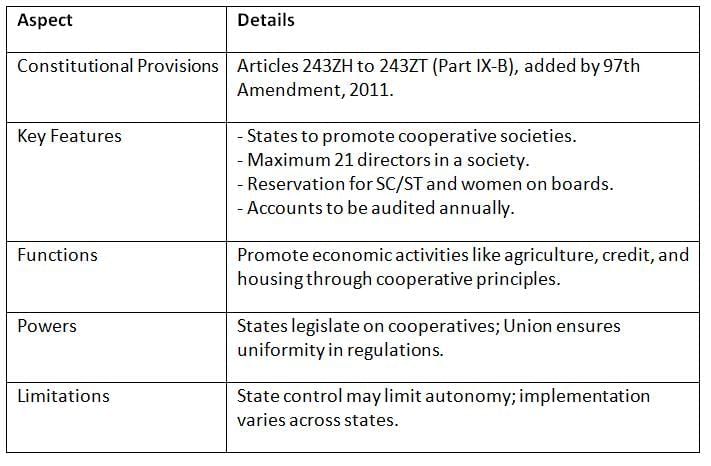
Key Points: The 97th Amendment strengthens cooperatives by ensuring democratic functioning and accountability but faces challenges due to state-level variations and limited autonomy.
Official Language
The Official Language provisions in the Constitution aim to facilitate communication in India’s multilingual society, balancing Hindi, English, and regional languages.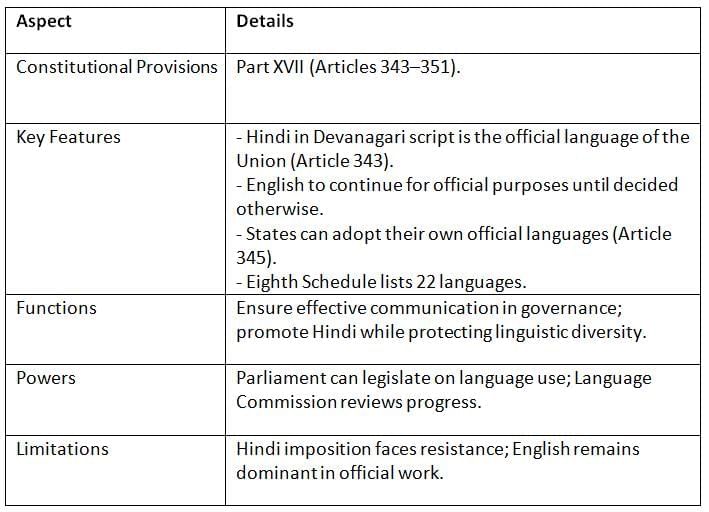
Key Points: Official Language provisions promote unity while respecting diversity, but regional linguistic sentiments often create tensions.
Public Services
Public Services provisions ensure fair recruitment, regulation, and protection of civil servants to maintain an efficient and impartial administration.
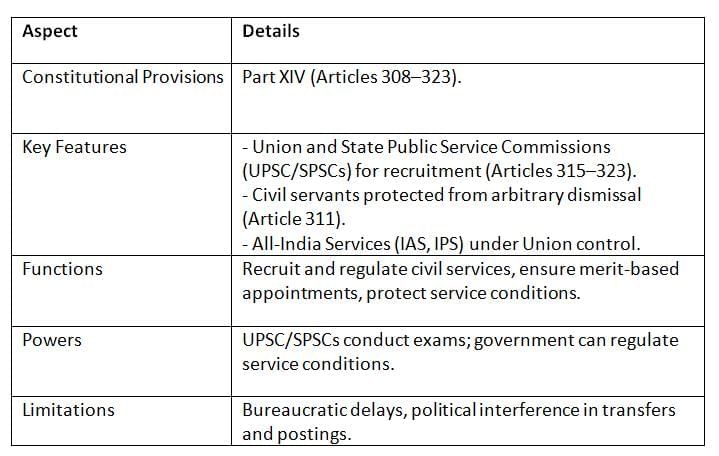
Key Points: Public Services provisions ensure a robust administrative framework but face challenges like political influence and inefficiency.
Rights and Liabilities of the Government
These provisions define the legal rights and liabilities of the government, ensuring accountability while protecting its authority to govern effectively.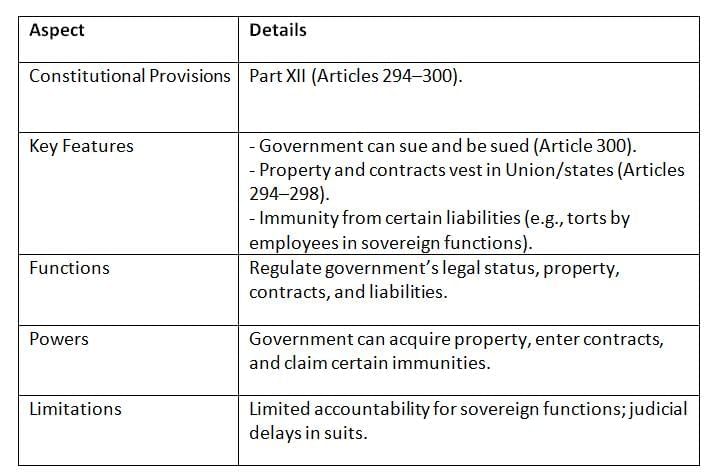
Key Points: These provisions balance government authority with accountability, though immunity in sovereign functions limits citizen recourse.
Special Provisions for Certain Classes
Special Provisions aim to uplift socially and educationally backward classes, including Scheduled Castes (SCs), Scheduled Tribes (STs), and Other Backward Classes (OBCs), to ensure equality.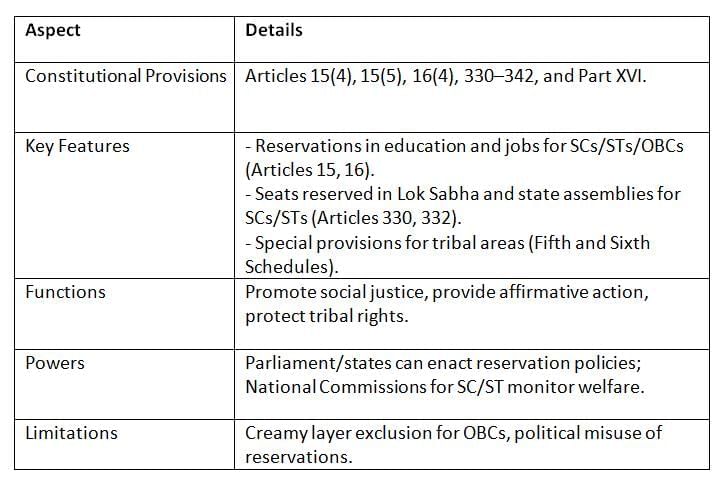
Key Points: Special Provisions drive social equity but face criticism for perpetuating caste divisions and uneven implementation.
Chronology of Key Provisions
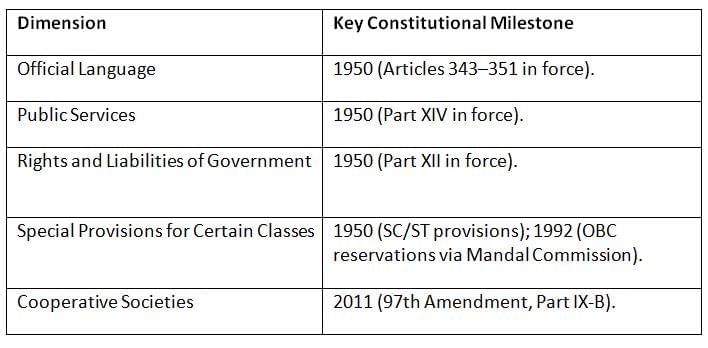
Conclusion
This chapter outlines critical constitutional dimensions that shape India’s governance and social framework. From promoting cooperative societies to ensuring linguistic harmony, efficient public services, government accountability, and social justice for marginalized classes, these provisions are foundational to India’s democratic system. Understanding them is essential for grasping how the Constitution balances governance, equity, and diversity in a complex nation.
|
150 videos|780 docs|202 tests
|
FAQs on Cheat Sheet: Other Constitutional Dimensions - Indian Polity for UPSC CSE
| 1. What are the key features of cooperative societies as outlined in the Constitution? |  |
| 2. How does the Constitution address the official language of India? |  |
| 3. What rights and liabilities does the government have in public services? |  |
| 4. What are the special provisions for certain classes in the Indian Constitution? |  |
| 5. How does the Constitution chronologically outline key provisions related to the topics discussed? |  |















